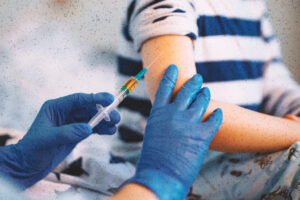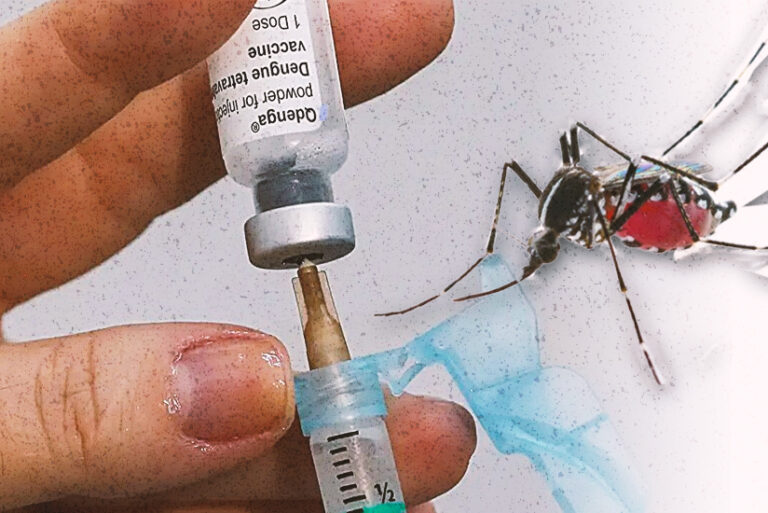Text and Photos by Henrylito D. Tacio
“If one has a routine colonoscopy at the age of 50, and then colonoscopies thereafter as the physician recommends, you could largely prevent colon cancer, you could detect it in its very earliest stages and cure it,” said Laurie Glimcher, a distinguished American immunologist who is widely known for her work in cancer research.
In the Philippines, colon cancer is the third leading cause of cancer-related deaths of Filipinos – after breast and lung cancers. The Philippine Cancer Society says almost 75% of those affected are aged 50 and above, while only about three percent are children (14 years and below).
Among those who died of colon cancer include president Corazon C. Aquino, actor Charlie Davao, and singers Susan Fuentes and Roel Cortez.
“Among cancers, colon cancer stands out as a disease that can be largely prevented, but few people believe it will happen to them,” said Dr. Atenodoro Ruiz, Jr., a gastroenterology consultant at St. Luke’s Medical Center and a diplomate of the American Board of Internal Medicine in Gastroenterology and of the Philippine College of Physicians in Internal Medicine.
“If it is still in its early stage and localized within the colon, the cure is 100 percent,” said Dr. Ruiz. “If it had spread to lymph nodes or distant organs, the 5-year survival rate is much lower.”
Regular screening
Better safe than sorry. “Many colorectal cancers can be prevented through regular screening,” cancercare.org says. “Screening can find precancerous polyps – abnormal growths in the colon or rectum – so that they can be removed before they turn into cancer. Screening is crucial because when found early, colorectal cancer is highly treatable.”
Dr. Ruiz recommends that colon cancer screening among Filipinos should start at age 50. And colonoscopy is the best screening test available for colon cancer. It is an examination used to detect changes or abnormalities in the large intestine (colon) and rectum.
“In colonoscopy,” explains Dr. Aaron I. Velasco, an internist and gastroenterologist who works in various hospitals in Davao City, “we use a tube with a tiny camera to look at the whole colon and rectum. We don’t only find tumors early, but the test can also prevent colorectal cancer by removing polyps.”
Signs and symptoms
I came to know Dr. Velasco because he was the person who performed a colonoscopy on me. If you are wondering why I had to undergo the procedure, here are the reasons: I am more than 50 years old, and I had this feeling or an urge of needing a bowel movement that is not relieved by doing so. In addition, I observed the narrowing of my stool, which lasted for more than a few days.
Early stages of colon cancer usually present no symptoms, but they tend to appear as the cancer progresses. But the symptoms I felt are among the established possible colon cancer symptoms.
The Mayo Clinic lists the following as symptoms of colon cancer: a change in bowel habits, such as more frequent diarrhea or constipation; rectal bleeding or blood in the stool; ongoing discomfort in the belly area, such as cramps, gas or pain; a feeling that the bowel doesn’t empty all the way during a bowel movement; weakness or tiredness; and losing weight without trying.
I told Dr. Ruiz, who happens to be my friend, about my situation. He suggested that I undergo a colonoscopy. When I inquired about possible complications, he replied, “You will be sedated, so there is no pain. Don’t worry.”
A colonoscopy usually takes 30 to 45 minutes, according to Dr. Velasco. However, in some instances, it may take longer, depending upon what is found and what is done during the test.
Before colonoscopy is done
Before a colonoscopy, he advised me to clean out (empty) my colon. One day before the procedure, he told me to take general liquids all day. “You must consume 3-4 liters of fluids, like water and juices,” he said. “For breakfast, you can eat porridge. Lunch is all noodles, and dinner will only be just soup.”
That’s not all. I had to drink an oral laxative twice: at 8 am and then at 3 pm. At 8 in the evening, I took four tablets of a known brand of senna preparation. After two in the morning the following day, he advised me not to take anything.
On the day of my colonoscopy, I took two tablets of another well known laxative at 5 am., and an hour later, my maintenance anti-hypertensive medicine. Both were taken with only a small sip of water.
I had my schedule at 9:30 in the morning, so my sister, Vangie (who would be accompanying me), and I went to the hospital an hour earlier. There was one patient ahead of us at the hospital endoscopy unit. When the nurse saw me, I was then attended to. I was asked to accomplish a consent form authorizing the procedure, then escorted to the changing room to don the hospital gown, and finally, was asked to lie down in a bed to have an intravenous line [colloquially called “dextrose”… but in reality, not all IV fluids contain dextrose, including the most common one, which is plain normal saline solution. But we digress – Ed.] inserted in my right hand.
It was past 10 when I was finally inside the screening room. They placed some devices all over my body, including a plastic nasal tube into my nose to provide extra oxygen during the procedure. To monitor the amount of oxygen in my blood, a small device was placed on my right finger. My blood pressure was also monitored.
I was asked to lie on my side on the exam table with my knees drawn toward my chest. Then, Dr. Philip Valencia, the anesthesiologist, told me, “Sir, I have to let you sleep now.”
He then proceeded to give a sedating anesthetic through an intravenous line to induce unconsciousness in me during the whole process.
True enough, I was sleeping when the colonoscopy was done on me. After 30 minutes or so, I was awakened by Dr. Valencia. “Sir, wake up,” he told me. “It’s done.”
Some precautions
Colonoscopy is very safe, but some doctors caution that there is a slight chance of problems arising from a colonoscopy. The scope, or a small tool utilized during the procedure may cause some tearing of the lining of the colon, or cause bleeding. This must be the reason why WebMd.com suggests that those who undergo colonoscopy should call their doctor immediately if, after the test, they: have heavy rectal bleeding, have severe belly pain, develop a fever, become very dizzy, develop some nausea and vomiting, and have a swollen or continuously swelling, firm belly.
Aside from colonoscopy, other screening tests for colon cancer include: barium enema X-rays, sigmoidoscopy, stool tests, and computed tomographic colonography. Which screening test you choose depends on your risk, your preference, and your doctor. “Be sure to talk to your doctor about what puts you at risk and what test is best for you,” Dr. Velasco says.
If you are wondering what the result of my colonoscopy was, it was negative for colon cancer and any other pathology. Thank God!
What if it were positive?
According to the Mayo Clinic, a colonoscopy is considered positive if the doctor finds any polyps or abnormal tissue in the colon. Depending on the size and number of polyps, you may need to follow a more rigorous surveillance schedule in the future to look for more polyps.
“If your doctor finds one or two polyps less than 0.4 inch (1 centimeter) in diameter, he may recommend a repeat colonoscopy in five to 10 years, depending on your other risk factors for colon cancer,” the Mayo Clinic states.
A doctor will recommend another colonoscopy sooner in the following scenarios: if the patient has more than two polyps; if a large polyp (larger than 0.4 inch) is found; if the presence of polyps and residual stool in the colon prevents complete examination of the colon; if there are polyps with certain cell characteristics that indicate a higher risk of future cancer; and cancerous polyps.
Other tests
“A stool test called the Fecal Immunochemical test (FIT) is a good screening alternative,” Dr. Ruiz says. “FIT detects only human blood and is specific for bleeding in the colon. The test is repeated every year if the initial test is negative. If the test is positive, a colonoscopy is needed to rule out the presence of cancer.”
Other screening tests that can be performed include sigmoidoscopy, double contrast barium enema, virtual colonoscopy and DNA stool tests. But these tests are not as thorough as a colonoscopy. If polyps or tumors are suspected based on these tests, you will still subsequently need to have a colonoscopy.
Colon cancer is deadly – but beatable if only it is discovered early. “The key here is screening patients who are already at risk for colon cancer,” Dr. Ruiz points out. “Patients may already have early cancer, even if they have no symptoms. We can also reduce the risk of colon cancer by removing pre-cancerous lesions (polyps) during a colonoscopy. In the end, colon cancer screening can just save your life or the life of a loved one.” – ###








